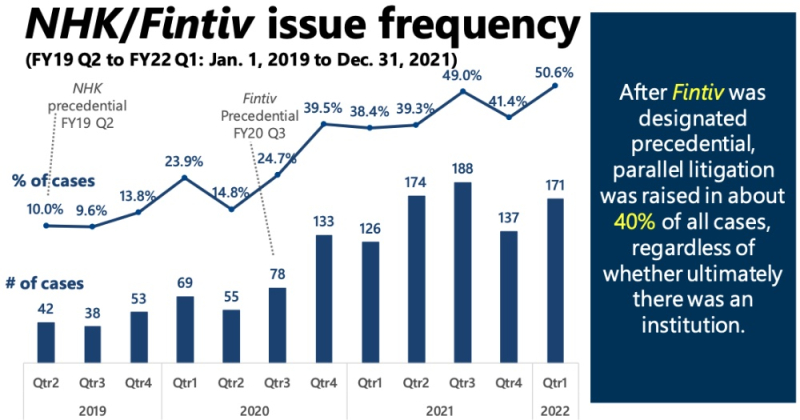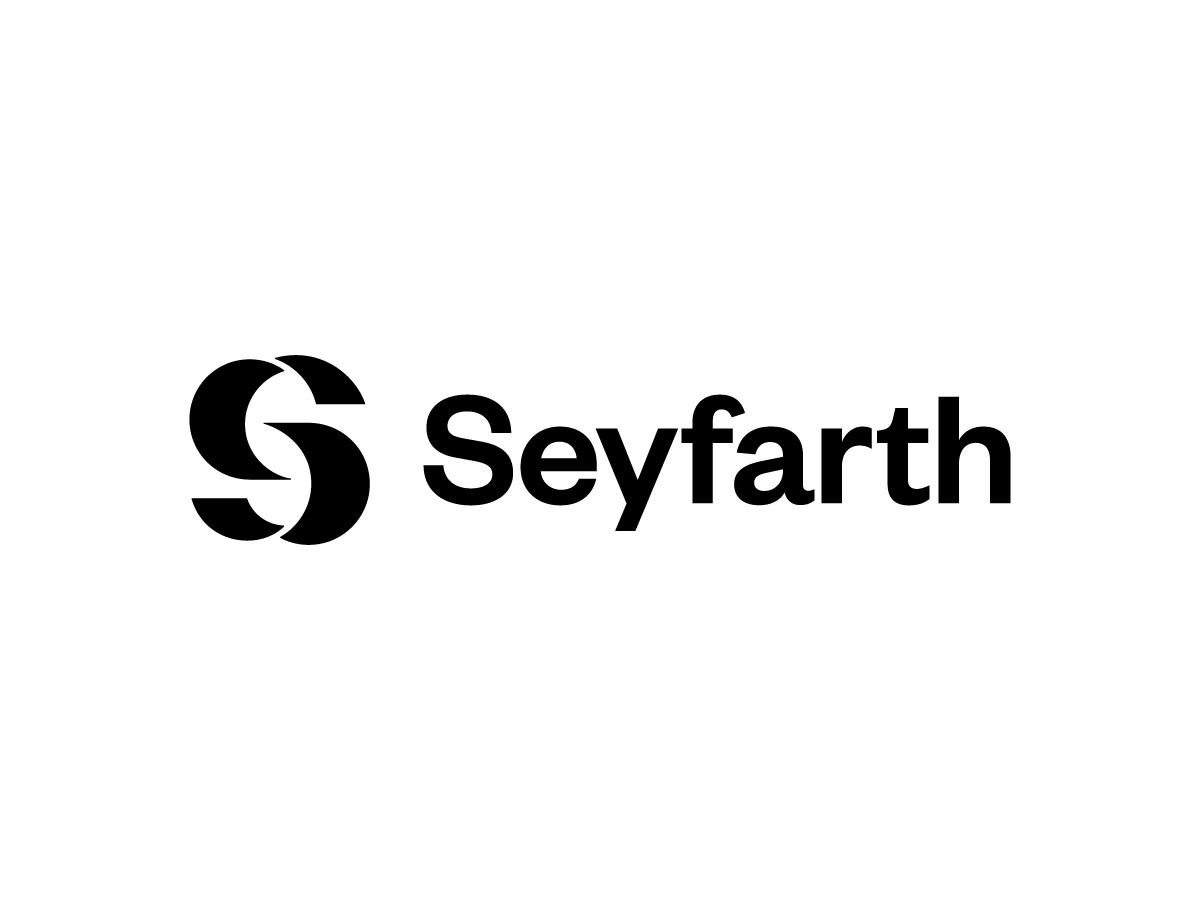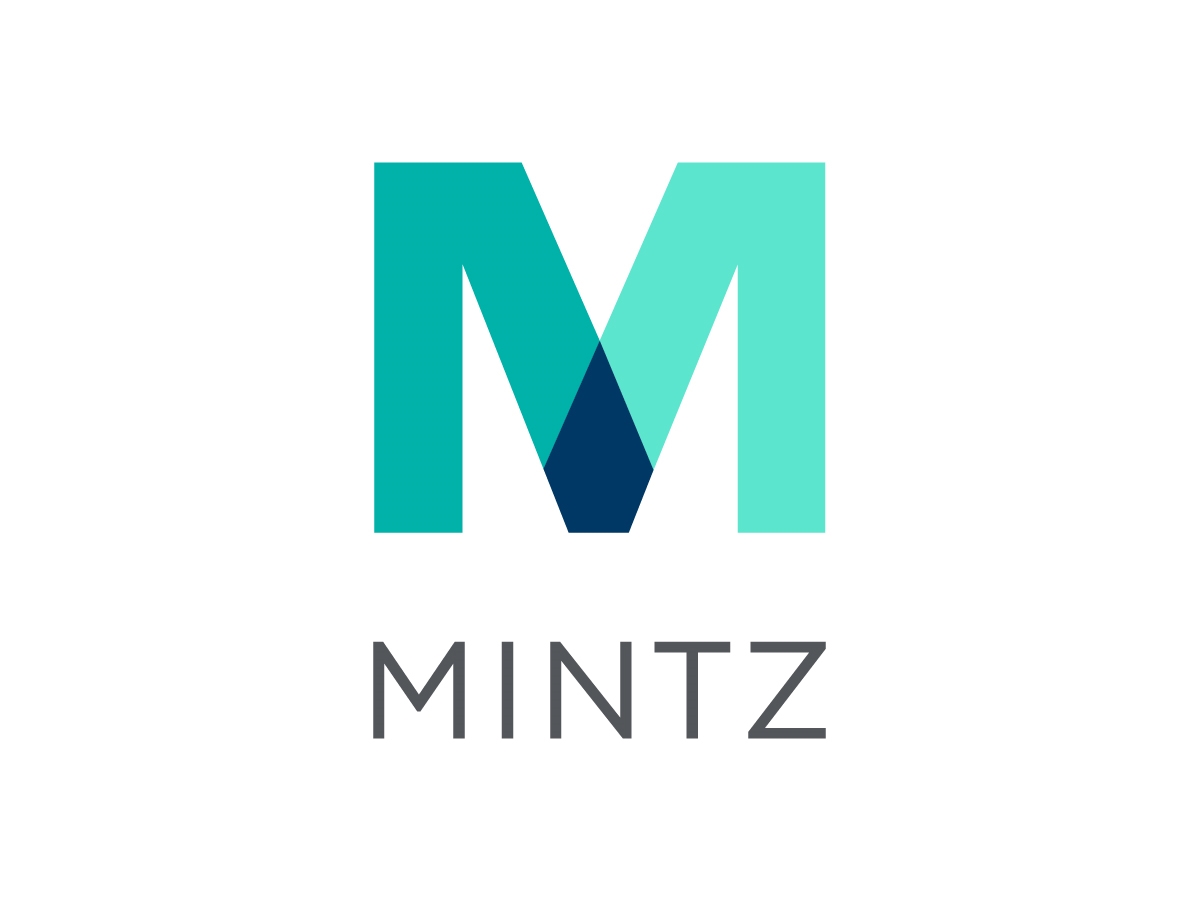USPTO Provides Guidance on PTAB Discretionary Denials of Challenges Based on Parallel Litigation | McDonnell Boehnen Hulbert & Berghoff LLP
On June 22, 2022, the U.S. Patent and Trademark Office issued two documents regarding the Patent Trial and Appeals Board’s discretionary denials of post-grant challenges based on parallel litigation: a retrospective study of such denials since 2019[1] and a prospective interim guidance memorandum from the Director regarding considerations for future decisions.[2] Both documents discuss the circumstances in which the PTAB may choose to deny institution of post-grant challenges when the same patent is being asserted in district court or ITC litigation. In combination, the two documents identify how to narrow the discretion that the PTAB will exercise in determining whether to proceed based on parallel litigation.
The USPTO’s retrospective study identified four cases as causing substantial inflections in discretionary denials of post-grant challenges: (1) NHK Spring Co., Ltd. v. Intri-Plex Techs., Inc., Case IPR2018- 00752, Paper 8 (Sept. 12, 2018); (2) Apple Inc. v. Fintiv, Inc., Case IPR2020-00019, Paper 11 (March 20, 2020); (3) Sand Revolution II, LLC v. Continental Intermodal Group – Trucking LLC, Case IPR2019-01393, Paper 24 (June 16, 2020); and (4) Sotera Wireless, Inc. v. Masimo Corporation (§ II.A), IPR2020-01019, Paper 12 (Dec. 1, 2020).
In NHK, the PTAB denied institution both on the basis that the cited prior art had already been considered in the Office and because the same invalidity challenges were being raised in the IPR petition and district court litigation. NHK was notable as the first decision expressly citing the “advanced state” of the district court litigation as a basis for denying the petition, namely that the trial was scheduled to occur before the inter partes review would have reached a final decision. But it also served as the catalyst for many others to seek denial of institution on the basis of parallel litigation.
Fintiv was one of those cases in which the patent owner asked the PTAB to deny institution. By that time, there had been enough such requests that the PTAB decided to provide some guidance to parties regarding the considerations that would go into the exercise of its discretion. The PTAB therefore provided a list of six non-exclusive factors that it would consider:
(1) whether a stay exists in the parallel litigation or would likely be granted if a proceeding is instituted;
(2) proximity of the court’s trial date to the Board’s projected statutory deadline;
(3) investment in the parallel proceeding by the court and parties;
(4) overlap between issues raised in the petition and in the parallel proceeding;
(5) whether the petitioner and the defendant in the parallel proceeding are the same party; and
(6) other circumstances that impact the Board’s exercise of discretion, including the merits.
The promulgation of the Fintiv factors brought increased clarity to whether the PTAB would exercise its discretion to deny institution of a petition, but it also brought a substantial upswing in the percentage of cases in which the argument would arise. It also led to a similar upswing in the number of cases in which the existence of parallel proceedings would lead to denial of institution.
The upward trend can be clearly seen in one of the USPTO’s graphs of both the number of cases and percentage of cases in which discretionary denial was raised:
A little over a year after the Fintiv factors were promulgated, the PTAB decided Sand. There, the petitioner sought reconsideration of a decision denying institution of an IPR by submitting a stipulation stating that it would not raise the same grounds in the IPR and parallel proceeding. The Board found that the stipulation, submitted to resolve the fourth Fintiv factor in the petitioner’s favor, tipped the balance and instituted the proceeding. The Sand decision caused the pendulum to swing back toward institution: more parties submitted similar stipulations and the number of discretionary denials based on parallel proceedings eventually shrank.
The trend downward for discretionary denials really escalated with the Sotera decision. There, the petitioner filed an even broader stipulation agreeing that it would not assert in the district any grounds “raised or that could have been reasonably raised in an IPR.” The PTAB instituted the review in Sotera, and many petitioners followed Sotera’s lead, which has led the Board not to exercise its discretion to reject review of the post-grant challenges.
Again, the USPTO’s statistical picture tells the tale. Once petitioners began filing robust Sotera-like petitions in the months after the decision, discretionary denials of institution dropped quickly:
While these cases were being resolved, the USPTO asked for comments to support potential rules on approaches to the exercise of discretion. It received 822. So while the Office is sifting through those comments, Director Vidal issued interim guidance to help practitioners. The guidance came in the form of four practices that the Board will implement.
First, whether the PTAB will have discretion to deny institution depends on the strength of the petition. If the petition’s evidence is insufficient to justify institution on the merits, the Board will not rely on the Fintiv factors as an alternative ground for denial. If the petition makes a sufficient showing under the statute — but not a strong one — the Fintiv factors will be in play. But if the petition’s evidence is compelling, the PTAB will not deny institution on the basis of the Fintiv factors.
Second, the PTAB will consider the Fintiv factors only in relation to parallel district court litigation. Although it has denied institution based on parallel ITC proceedings in the past, it will no longer do so because the ITC lacks the power to invalidate a patent and its rulings are not binding on the Office or district courts.
Third, following Sotera, the PTAB will not discretionarily deny institution if the petitioner files a stipulation indicating that it will not pursue in the district court the same invalidity grounds or any grounds that could reasonably be raised before the PTAB. That is, the Office is making the downward trend its full-time practice based on the overwhelming strength of the fourth Fintiv factor.
Fourth, in determining the second Fintiv factor (the proximity of the court’s trial date to the Board’s projected statutory deadline), the PTAB will consider not only scheduled trial date, but also time-to-trial statistics such as number of cases before the judge and speed and availability of other case dispostions. This is because — as numerous comments pointed out — different courts have different practices regarding the likelihood of extensions of the trial date. It is a point strongly reflected in the statistics published by the USPTO — in 2021, review of the Fintiv factors led to discretionary denial about 10% of the time when the case was pending in the District of Delaware, about 15% of the time when the case was pending in the Western District of Texas, and almost 65% of the time when the case was pending in the Eastern District of Texas.
In light of Director Vidal’s guidance, practitioners have much greater clarity regarding how to address discretionary challenges based on parallel litigation. Patent owners know they should not raise the issue based on an ITC proceeding, and likely should not in a slower-to-trial jurisdiction. But they also know that the argument fits nicely with an argument on the merits, as an attack on the strength of the petition can be couched as a Fintiv argument. The petitioner, however, can moot the Fintiv argument if it is willing to provide a broad, Sotera-like stipulation not to pursue in the district court any invalidity grounds that it can raise before the PTAB. As a result, the PTAB’s discretion will be much more limited and Fintiv decisions will be far more predictable.
[1] https://www.uspto.gov/sites/default/files/documents/ptab_parallel_litigation_study_20220621_.pdf
[2]







